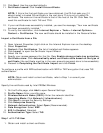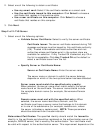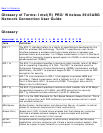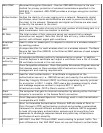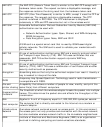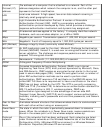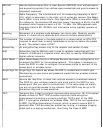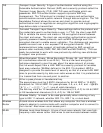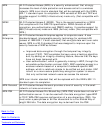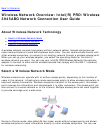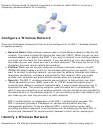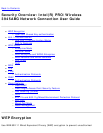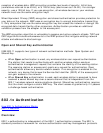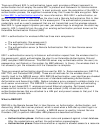
TLS Transport Layer Security. A type of authentication method using the
Extensible Authentication Protocol (EAP) and a security protocol called the
Transport Layer Security (TLS). EAP-TLS uses certificates which use
passwords. EAP-TLS authentication supports dynamic WEP key
management. The TLS protocol is intended to secure and authenticate
communications across a public network through data encryption. The TLS
Handshake Protocol allows the server and client to provide mutual
authentication and to negotiate an encryption algorithm and cryptographic
keys before data is transmitted.
TTLS Tunneled Transport Layer Security. These settings define the protocol and
the credentials used to authenticate a user. In TTLS, the client uses EAP-
TLS to validate the server and create a TLS-encrypted channel between
the client and server. The client can use another authentication protocol,
typically password-based protocols, such as MD5 Challenge over this
encrypted channel to enable server validation. The challenge and response
packets are sent over a non-exposed TLS encrypted channel. TTLS
implementations today support all methods defined by EAP, as well as
several older methods (CHAP, PAP, MS-CHAP and MS-CHAPv2). TTLS can
easily be extended to work with new protocols by defining new attributes
to support new protocols.
WEP Wired Equivalent Privacy. Wired Equivalent Privacy, 64- and 128-bit (64-
bit is sometimes referred to as 40-bit). This is a low-level encryption
technique designed to give the user about the same amount of privacy
that he would expect from a LAN. WEP is a security protocol for wireless
local area networks (WLANs) defined in the 802.11b standard. WEP is
designed to provide the same level of security as that of a wired LAN. WEP
aims to provide security by data over radio waves so that it is protected as
it is transmitted from one end point to another.
WEP Key Either a pass phrase or hexadecimal key.
The pass phrase must be 5 ASCII characters for 64-bit WEP or 13 ASCII
characters for 128-bit WEP. For pass phrases, 0-9, a-z, A-Z, and ~!@#$%
^&*()_+|`-={}|[]\:";'<>?,./ are all valid characters.
The hex key must be 10 hexadecimal characters (0-9, A-F) for 64-bit WEP
or 26 hexadecimal characters (0-9, A-F) for 128-bit WEP.
Wi-Fi Wireless Fidelity. Is meant to be used generically when referring of any
type to 802.11 network, whether 802.11b, 802.11a, or dual-band.
Wireless
Router
A stand-alone wireless hub that allows any computer that has a wireless
network adapter to communicate with another computer and to connect to
the Internet. Also known as an access point.
WLAN Wireless Local-Area Network. A type of local-area network that uses high-
frequency radio waves rather than wires to communicate between nodes.



